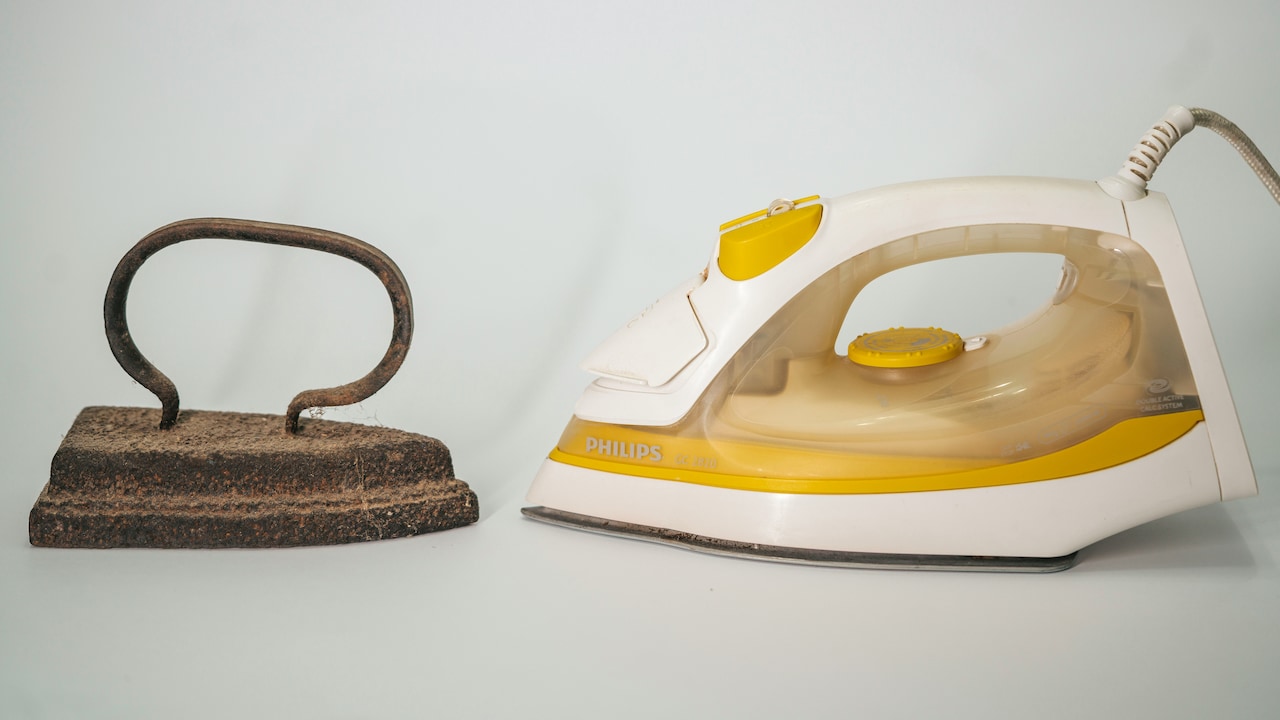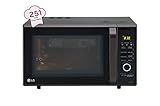Keep The Heat In Check: Smart Habits To Stop Your Electric Iron From Overheating
An electric iron is one of those humble household heroes that keeps our clothes crisp and our mornings smooth. This is how to keep that trusty iron cool, efficient, and long-lasting, with a clever tricks, relatable habits and some homegrown wisdom.

How To Prevent Overheating In Electric Irons: All You Wanted To Know.
There's something oddly satisfying about gliding a freshly heated iron over a wrinkled shirt, watching creases disappear like magic. For many homes, this small appliance is a daily companion, quietly serving before office hours, school rushes, or festive gatherings. But as reliable as it seems, the electric iron has a temper. Overheat it, and it turns from a loyal helper into a fabric's worst nightmare.
Overheating can cause more than just a burnt patch on valuable outfits. It can shorten the iron's lifespan, damage delicate materials, and even make your electricity bill rise. The good news? With a few mindful habits and smart care techniques, overheating can be prevented altogether.
We list 10 easy ways to maintain your electric iron - keep it clean, cool, steady, durable, and always pressing perfectly. Also, check the top 7 picks from Bajaj, Havells to Usha.

Here are 10 practical, easy-to-follow ways to keep your electric iron in its best shape, cool, steady, and always ready to press on; Photo Credit: Pexels
Smart Ways To Keep Your Iron Cool And Efficient
1. Choose the Right Temperature for Every Fabric
Different fabrics demand different levels of heat. Cotton may tolerate high temperatures, but silk, chiffon, or polyester need a gentle touch. Most modern irons come with fabric indicators, take them seriously. Always read the garment label before ironing; it's a tiny tag that saves big headaches.
A common mistake is setting the iron too hot, hoping it'll make the job faster. Instead, it often leaves scorch marks or shiny patches, especially on delicate materials. Start with the lowest setting and increase only if needed. Think of it as seasoning a curry, you can always add more heat, but once it's too spicy, there's no turning back.
Keeping your iron's temperature in tune with fabric types not only prevents overheating but also preserves the beauty of your clothes. Your favourite cotton kurta and silk saree will thank you in their quiet, wrinkle-free way.
2. Give Your Iron Regular Breaks
An electric iron, much like us, performs best when given a breather. Continuous use for long periods causes the internal thermostat to overwork, leading to overheating or premature damage.
During those long ironing sessions, say, before a wedding or festive event, switch off the iron for a few minutes after every ten garments or so. Let it cool while you fold the finished clothes or take a sip of chai. It's a simple rhythm that keeps the iron's components balanced and prevents heat from building up excessively.
Over time, this small habit can make a big difference. The iron lasts longer, consumes less electricity, and performs consistently. It's a bit like pacing yourself on a hot summer day, steady, not sweaty.
3. Keep the Soleplate Clean and Shiny
A dirty soleplate traps residue, dust, and fabric fibres, which can block heat sensors and cause uneven heating. Over time, the iron struggles to distribute warmth evenly, forcing you to crank up the temperature unnecessarily.
To avoid this, clean the soleplate at least once a month. Unplug the iron and let it cool completely. Then, gently wipe it with a soft cloth dipped in a mixture of baking soda and water. For stubborn marks, a dab of white vinegar works wonders. Avoid metal scrubbers, they scratch and damage the surface.
A clean soleplate glides smoothly and heats evenly, meaning you won't need to overheat it to get results. Plus, it keeps your whites from turning brownish and your silks from sticking, a win-win for your wardrobe.
4. Store It Safely After Use
How you store your iron says a lot about how long it will last. Leaving it plugged in or resting on its soleplate after use is a recipe for overheating and internal wear. Always unplug immediately after ironing and allow it to cool on its heel (the upright position).
Once cool, wrap the cord loosely without twisting or bending it sharply. Store the iron in a dry place, away from moisture and direct sunlight. If possible, cover it with a cloth or place it in its box.
This little ritual might seem unnecessary, but it helps the thermostat and heating elements cool down gradually, maintaining their sensitivity. Much like giving your mobile a breather after a long call, your iron too deserves a little post-work rest.
Also Read: How Antimicrobial Towels And Smart Wardrobe Organisation Ensure Hygiene: Top 10 Tips
5. Use a Surge Protector
Voltage fluctuations are more common than we'd like to admit. A sudden surge can cause your iron to heat up rapidly or even fry its internal circuits. Investing in a reliable surge protector, priced around ₹300 to ₹700, can be a lifesaver.
Plug the iron into a surge protector before connecting it to the main socket. It absorbs the excess voltage and prevents damage from power spikes, especially during storms or power cuts.
This small precaution not only prevents overheating but also protects your other household appliances. It's a simple shield against the unpredictable nature of the power grid.
6. Avoid Overfilling the Water Tank
For steam irons, the water tank is both a blessing and a risk. Too much water increases pressure, and when the iron heats up, excess steam can cause overheating or leakage. Always fill the tank just up to the indicated line, never above it.
Use distilled or filtered water instead of tap water to avoid mineral buildup. Hard water deposits clog the vents and make the iron work harder, raising its internal temperature.
Empty the tank after each use to prevent corrosion and odour. Think of it as draining a pressure cooker, safer, cleaner, and more efficient for the next time.
7. Don't Ignore the Thermostat Light
That little orange or red light on your iron isn't just decorative, it's the iron's way of communicating. When it turns off, the iron has reached the desired temperature. When it's on, the iron is still heating up.
Many people start ironing while the light is still glowing, assuming it'll save time. Instead, it often leads to overheating or inconsistent temperatures. Always wait for the light to turn off before starting, and pause when it switches back on mid-use.
This small act of patience keeps your iron stable and efficient. It's like letting a dosa cook properly before flipping, timing makes all the difference.
8. Iron in a Well-Ventilated Space
A stuffy, poorly ventilated room traps heat, making both you and the iron warmer than necessary. Overheating happens faster in such environments because there's no space for heat to disperse.
Iron near an open window or with a fan on low speed. Not only does it keep the air fresh, but it also helps your iron maintain a steady temperature. Humidity and trapped heat can confuse the thermostat, leading to unnecessary heating cycles.
A comfortable environment also keeps you calm and focused, reducing the chances of accidents like leaving the iron face-down on fabric. It's the kind of calm that makes even a pile of clothes feel conquerable.
9. Handle Extension Cords Wisely
Using a low-quality or long extension cord for your iron might seem harmless, but it can cause power fluctuations. When the cord isn't designed to handle high wattage, it can overheat, forcing the iron's internal system to overcompensate.
Always use a heavy-duty extension cord, preferably with a built-in fuse. Keep it untangled and ensure it lies flat while in use. Avoid running other high-power appliances on the same extension board.
It's a small but crucial habit that not only protects your iron but also prevents short circuits, a safety win for your home.
10. Schedule Professional Servicing Once a Year
Even with the best care, electric irons can develop internal issues, worn-out thermostats, faulty wires, or loose connectors. These small faults often cause overheating without visible signs.
Once a year, have your iron checked by a professional technician. The cost is modest, around ₹200–₹400, but the benefits are enormous. The technician can clean, recalibrate, and test the internal components to ensure everything's running safely.
Regular servicing extends the iron's life, keeps electricity consumption low, and ensures peace of mind. After all, prevention is always cheaper than replacing a burnt-out appliance.
Products Related To This Article
1. Bajaj Stainless Steel Majesty DX-11 1000 Watts Dry Iron
2. Havells Glace Plus 1000 Watts Dry Iron Press
3. USHA Armor 1100 watts Dry Iron with Shock Proof Plastic Body
4. Wipro Elato GD203 1200 Watt Heavyweight Dry Iron
5. Bajaj DX-6 1000 Watts Dry Iron
6. Orient Electric Fabrijoy 1000 Watt Dry Iron for clothes with Weilburger Non Stick Soleplate coating
7. GM Ferro 1200W Heavyweight Dry Iron Press 1.75 Kg
An electric iron may be small, but it shoulders a big responsibility in daily life. From school uniforms to office formals and festive attire, it's the quiet craftsman behind every crisp fold. Preventing overheating isn't just about protecting an appliance, it's about preserving safety, efficiency, and comfort at home.
With mindful care, short breaks, and regular cleaning, the iron stays reliable and ready. Simple acts like waiting for the thermostat light, storing it safely, and giving it a professional check-up turn routine ironing into a safer, smoother ritual.
So next time the iron hums to life, treat it with a little respect and attention. It's not just metal and wires, it's the tool that helps you walk out each day, looking your confident best. Shop now on Amazon.
Disclaimer: The images used in this article are for illustration purpose only. They may not be an exact representation of the products, categories and brands listed in this article.
























